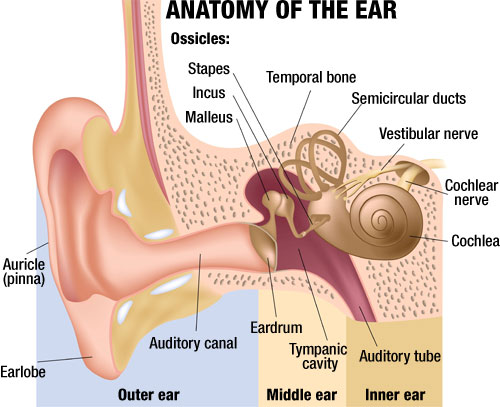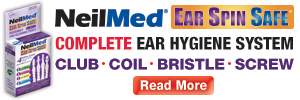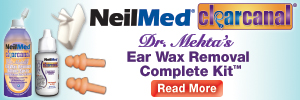It feels like my ear won’t pop!
 |
Joanne M. Vitanza, M.D. Board Certified Allergist-Immunologist About the author: Joanne M. Vitanza, M.D. I am a board-certified Allergist-Immunologist with 15 years of clinical practice experience in the metro Denver area treating patients with nasal and sinus disease. |
This symptom, also described as ear fullness or ear pressure, can be very disturbing for the person who has it. Essentially, it feels like you are in an ascending or descending airplane and you are waiting for your ear to “pop,” but it doesn’t. It may be uncomfortable or it may be painful, it may occur in one or both ears, and it may be short-lived (acute), intermittent, or chronic. This is a symptom of eustachian tube dysfunction. There are two eustachian tubes; each is a very narrow canal that connects the middle ear (the space behind the ear drum) to the very back of the nasal passage on the same side. If one (or both) of these canals become blocked, a person may experience fullness or pressure in the ear (or ears). A common cause of eustachian tube dysfunction is inflammation of the nasal passages, known as rhinitis. Nasal inflammation may be due, for example, to a viral upper respiratory infection (ie, the common cold), to seasonal or year-round allergies, or to airborne irritants such as cigarette smoke. Patients with rhinitis as a cause of eustachian tube dysfunction experience nasal symptoms (eg, a stuffy nose) at the same time as the ear symptom, although the nasal symptoms may be mild while the ear symptom is quite bothersome. The treatment of eustachian tube dysfunction usually begins with treating the nasal inflammation. This treatment depends on the cause of the nasal inflammation; for example, ear fullness in association with the common cold may be treated with an oral decongestant for a few days, and ear fullness in association with allergic rhinitis may be treated with a nasal corticosteroid spray. Sometimes, however, the ear fullness continues despite treatment of the nasal inflammation. On occasion, a person may require a surgeon to insert a small “tube” through the ear drum, into the middle ear space, in order to relieve the symptom.

(318939)


Sara Dugan liked this on Facebook.
Margaret Adkinson liked this on Facebook.
Ann Terebinski Crowder liked this on Facebook.
Gordon Nash liked this on Facebook.
Gita Mistry liked this on Facebook.
Nia Gholston liked this on Facebook.
Robert Miąs liked this on Facebook.
Natalie Meloro liked this on Facebook.
Cindy Geglio liked this on Facebook.
Wahida Benferhat liked this on Facebook.
Jaime Dawn Wiersema liked this on Facebook.
Hi, just want to share my personal experience. Sinus congestion is quite common. If you are facing the same problem you can get effective results at given link. They have the best technology and know what they do.
Christopher Williams liked this on Facebook.
Cheryl Kay Cronk liked this on Facebook.
Kostas Bekiaris liked this on Facebook.
Małgorzata Ratyńska liked this on Facebook.
Linda Willhelm Snyder liked this on Facebook.
Carl Farris liked this on Facebook.
Robin Bisworm Alves liked this on Facebook.
Judi Borst Coss liked this on Facebook.
Krishna Vemuganti liked this on Facebook.
Loubie Taouli liked this on Facebook.
It cleared up that afternoon and never came back 🙂
Dianna E Davis McNamara liked this on Facebook.
Jaz Bovey
Robert Pericak liked this on Facebook.
Shirley Tremblay-Chouinard liked this on Facebook.
Harry Mcclurg liked this on Facebook.
Bethany Montoya liked this on Facebook.
Dorothy Lopez liked this on Facebook.
Ann Marie McKenna liked this on Facebook.
Yes it does work.
WORKS!!!